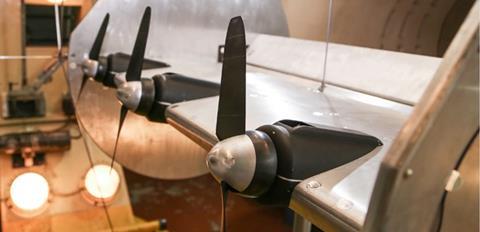Russian analysts are assessing the potential for distributed powerplants to improve lift for future regional aircraft concepts.
The research aims to enable regional aircraft to be based at lower-class airports which have particularly stringent operating requirements – such as those with runways of 500-1,000m in length.
Moscow’s Central Aerohydrodynamic Institute and the Central Institute of Aviation Motors are collaborating on the project.
The work has involved creating highly-efficient wings by driving an air stream from distributed propeller engines across the wing surface.
“This solution is relevant at low flight speeds, when it is necessary to maintain high lift and ensure the stability of the aircraft,” says the Central Aerohydrodynamic Institute.

The work focused on the “positive mutual influence” of wing configurations with distributed powerplants, mounted along the leading edge, to provide “uniform and seamless” airflow.
Tests were carried out in windtunnels to explore different powerplant operating modes and flow rates.
As a result, the institute says, researchers have been able to determine optimised combinations of propeller speed and high-lift configurations for the wing. This work will be used to improve the flight performance of future regional aircraft designs, including those using hybrid powerplants.


























